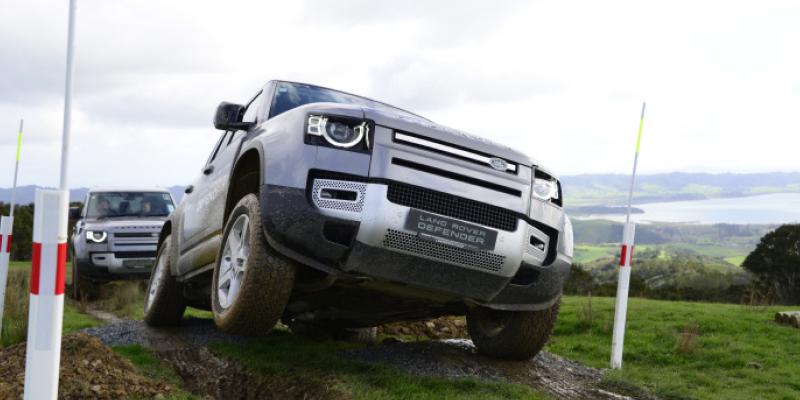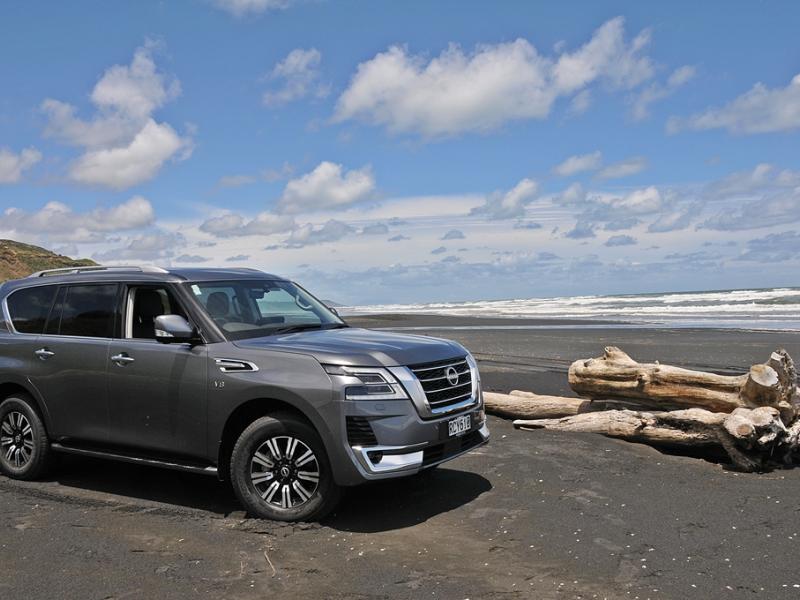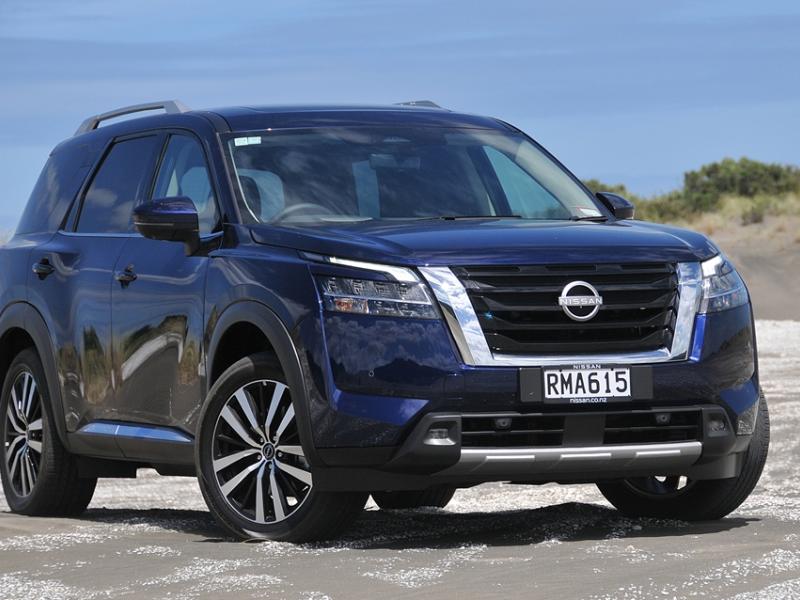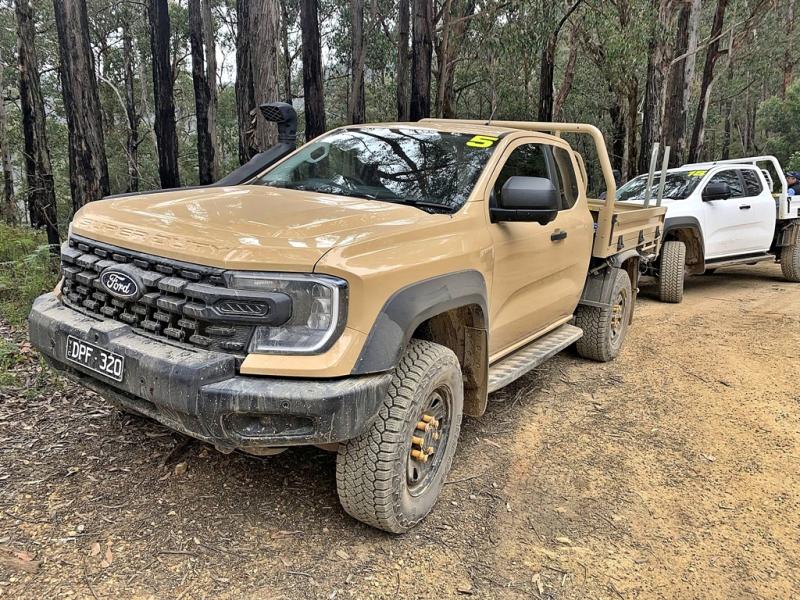The wait is over FOR Land Rover’s all-new Defender. Whether it is what the diehards want is another thing altogether as NZ4WD’s resident expert on all things L-R – Ashley Lucas – discusses here after attending the local press launch.
Four years of anticipation of what the Land Rover Defender replacement would be should be (or shouldn’t be) ended for Kiwis in late vJuly with the arrival of the new Defender on our shores.
Obviously, anyone remotely interested in 4WDs and four-wheeling would have seen the photos and read the comments from diehard Land Rover fans of the green oval; with many saying it’s not like the old Defender.
So are they right or wrong? NZ4WD headed along to the official launch in NZ at the end of July for a first look and drive of the new Defender 110. The big question on my mind was, is it worthy of being part of the Land Rover family and – perhaps even more importantly, live up to its storied name?
The fact that the old model hung on for so long is testimony to it lasting appeal but it couldn’t continue due to its antiquated design and inability to meet modern legislation standards for modern vehicles.
This was a concern for enthusiasts world-wide as they feared the 2011 DC100 (Defender Concept 100”) would become the new Defender. There were also anxieties that the Defender would look just like the rest of the Land Rover stable all looking so similar it is hard to identify each model.
First view
The first view of the Defender shows it carries some resemblance to the old model in little features, just as the second generation Range Rover did back in 1995; it also looks a little bit like the Discovery 3/4 but it definitely has more Defender DNA. It’s not as boxy, doesn’t look like the other bland offerings from the current modern Land Rover stable and thus stands out on its own, as it needs to. It looks tough and purposeful, in fact Land Rover makes the bold claim that it’s the most rugged and durable vehicle they have ever built.
The New Defender is built on the D7x platform with the x standing for Extreme. It is all aluminium and regarded by Land Rover as the toughest, stiffest monocoque body they have ever built with a torsional rigidity of 27,000Nm per degree.
Prototypes covered more than 1.2 million kms during testing and the engineering teams completed more than 62000 tests in the harshest of environments from +50˚C to -40˚C and engineered to withstand extreme tests above and beyond normal SUV standards. .
What Land Rover has done is put a wheel into each corner reducing the front and rear overhang which not only improves handling but also greatly increases approach and departure angles for off road.
The approach angle is now 38 degrees in off road height and the departure angle is 40 degrees, ramp angle 28 degrees. This has been achieved by extending the wheel base from 2794mm (110 inches) to 3,022mm (119 inches) making a bit of a mockery of the classification name Defender 110.
Overall, in fact, the new Defender 110 is longer at 5018 by 233mm overall compared to the old model and is also wider at 2105mm mirror to mirror compared to original 1790mm.
Which reminds me!
Looking at the (new) Defender there are a number of design cues of the Defender of old, in that it is still a little boxy with the front roof sloping down, it has alpine windows, a side opening tail door and the rear mounted spare wheel. Also, the body still has a barrel waistline echoing back to the Series II Land Rover and also the traditional alpine roof windows and whilst the rear door mounted spare wheel is retained however the taillights are neither round nor square.
At present only the Defender 110 has reached our shores with the shorter Defender 90 due in February 2021 and the 130 due at the end of 2021.
Previously the Defender had a simple choice of engines, diesel or nothing but now there are four engine options to choose from; two diesel and two petrol. The diesel comes in the form of a four-cylinder D200 on base model Defender and D240 engines with sequential twin turbos both providing 430Nm of torque at 1400 rpm in the others.
Petrol options are between a turbocharged 1997cc four-cylinder with maximum power of 300kW or an in-line 3.0 litre six-cylinder which can achieve 0-100m/h in 6.1 seconds. All engines are mated to an eight-speed automatic transmission and permanent four-wheel-drive.
Air apparent
It comes as no surprise that the Defender has independent air suspension although there is likely to be a coil spring option on the base commercial model (when released) but we may not see that here in NZ.
The air suspension gives a best in class ground clearance of 291mm which is raised from standard height by 75mm to off road and able to be extended a further 70mm in more extreme off-road conditions selected through the Terrain Response 2 system.
There are 11 wheel and tyre options ranging from the base 18-inch white steel to 19 and 20-inch alloys standard on the other models although there are a couple of 22-inch options available. A/T tyres are standard although all season tyres are available as a no cost option.
Inside the experience is all new with plenty of legroom front and rear and elbow room in the front (see what I mean!) The main controls including the auto gear lever are mounted high in the centre to allow for a centre front row seat option.
Seats are leather in all variants of the Defender apart from the base model which has yet to arrive in NZ. Front seats are electrically adjustable and very comfortable. And the standard seating configuration is five with the options of six (centre jump seat) and seven seats with all three rows having heated seats. When the 130 arrives it will offer a full-size eight-seater option.
Just like the old’un
A feature I like is the small parcel shelf across the dash that can hold small items and harps back to the Series and early 90/110s of old. There is a nice grab handle on the passenger’s side to help climb up into it and also a grab handle bar across the front as well for passengers to grab when you drop over steep descents and such like.
In the centre is the PIVI Pro (Plug-in Vehicle Infotainment) that is smart phone inspired, fast start up and responsive, flat interface system – things you use regularly are one click away. There is wireless charging along with plenty of accessory connections throughout the cabin.
But it was from a 4WD and off road perspective that I was keen to try and was able to do so with an off-road drive at Duncan Munro’s Pukerau property, a test venue NZ4WD has used many times over the years. There had been quite a bit of rain leading up to the launch so the ground was rather wet and slippery and the standard tyres were at normal pressures.
So far, so good
First impressions were very good; it rides the tracks very well and is extremely quiet inside which was surprising as there didn’t seem to be as much sound deadening under the bonnet as expected. Seating was excellent and gave good forward vision over the bonnet but if that is not enough for you there is always the front mounted ClearSight ground view camera which shows the ground under the bonnet and the front wheels allowing you to position the vehicle precisely on the tracks and avoid obstacles. There is also a 3D surround camera providing a 360 degree view of the surrounding area so no need for someone to act as a spotter outside the vehicle.
On the subject of cameras there is even a rear-mounted ClearSight Rear View camera in which the rear view mirror switches from a conventional mirror to a digital screen showing a feed provided by a high definition camera to eliminate blind spots. The clarity was amazing, particularly in low light conditions and the camera lens has a hydrophobic coating to maintain performance in wet and muddy conditions.
The camera is standard on vehicles with the front centre seat option and while I liked it, there were others who couldn’t adjust to having a screen for the rear mirror.
Wot, no locking middle diff?
Gone is the centre diff lock, replaced by an electronic option that offers choice of limited slip as well as centre and rear locking selected via the touchscreen. The Defender is equipped with Land Rover’s latest Terrain Response 2 which includes an automatic mode and also features a world first configurable mode adjusting the response of the throttle (Relaxed/Normal/Responsive), steering (Light/Medium/Heavy), differentials (Automatic/ Centre Slip Limited/Centre & Rear Slip Limited) and traction control (Less Wheel Spin/Off Road/More Wheel Spin).
Some might see this as a gimmick for most buyers but I found it fun to play with and rather practical but is a $1,450 option and not standard in all models.
The traction control worked extremely well off road and with the locking of the diffs, progress was smooth even when wheels were lifted off the ground.
The Defender has increased wading ability over the old model with a wading depth now of 900mm (previously only 500mm) with sensors fitted around the vehicle showing the depth on the screen as you progress. Side slope and hill climbs and descents are also shown on the screen with the Defender having the ability to easily climb at 45 degrees.
But wait, there’s more!
There is so much technology there isn’t room to list it all here but it is worth mentioning that the Defender is all new 5G ready with the PIVI-Pro software automatically updated, with Software Over the Air wirelessly, effectively making it “future proof”. You can even use your smartphone as a remote to lock, start, heat and even cool the vehicle.
Our off road drive was short and to the point designed to show off features of the Defender including articulation, traction control and hill descent. The hill descent speed is adjustable via the cruise control switch on the steering wheel. I was pleasantly surprised at how good it really was, as I expected it to lose traction in certain situations but it drove through effortlessly. Even the articulation course when it lifted wheels high into the air it drove through without hesitation.
Our time was limited with the Defender but we will get the opportunity to get one in the future to do a full test on and off road.
I think Land Rover has done very well with the Defender and it is certainly worthy of the Land Rover name. I am not so sure though that it is a Defender as we knew it! It certainly has off road capability and durability over the old Defender but I see it as more what the Discovery 4 replacement should have been and I suggest that owners of the Discovery 4 that didn’t upgrade to the Discovery 5 for whatever reasons will seriously consider the new Defender.
It is an adventure vehicle rather than a mud plugger as evidenced by the various Defender option packs available: Country Pack, Adventure Pack and Explorer Pack.






